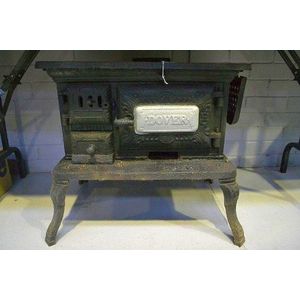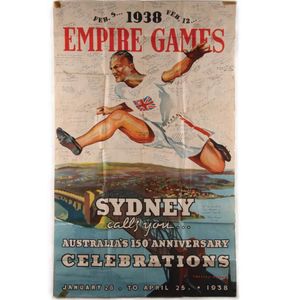Baroque Boulle Mazarin Desk, 19th Century
You must be a subscriber, and be logged in to view price and dealer details.
Subscribe Now to view actual auction price for this item
When you subscribe, you have the option of setting the currency in which to display prices to $Au, $US, $NZ or Stg.
- Kneehole - A recessed section, mainly found on Georgian desks and dressing tables, which does not go through the full depth of the item, and usually terminates in a cupboard at the back.
- Boulle - Boulle work is the name given to tortoiseshell and metal inlay using brass and sometimes silver, found on furniture and smaller wooden objects. It originated in Italy but was developed by Frenchman Andre Charles Boulle (1642 - 1732) under Louis XIV.
Boulle was appointed Royal Cainet Maker to Louis XIV and designed furniture and clockcases for the monarch.
In preparation, the tortoiseshell and metal were cut together following a design, using a fine fret saw.
In the application of the Boulle, the carcase of piece of furniture was covered with the tortoiseshell which in turn was inlaid with the matched designs in metal, which in turn was elaborately engraved.
The use of Boulle work furniture continued mainly in France until the 19th century. - Tortoiseshell - Tortoiseshell is a translucent material that comes from the horny carapace of a certain types of turtles, including the hawksbill turtle. It is often therefore mounted on a colour underground - often red - or inlaid with gold or silver thread, as seen in Boulle furniture.
The texture and colour nuances of the material are extremely important. Heated tortoiseshell can easily be formed into various shapes. Like other natural materials, tortoiseshell becomes more beautiful with use. In a time before plastic, tortoiseshell was widely used for small objects such as combs and powder compacts.
In 1973, the trade of tortoiseshell worldwide was banned under CITES (The Convention on International Trade in Endangered Species). Prior to importing or exporting items containing tortoiseshell a CITES permit must be obtained. Tortoiseshell items cannot be traded on Ebay.
"Faux tortoiseshell", another case of man initiating nature, is made from old-style plastics such as celluloid and cellulos and is coloured with red, yellow and brown spots to imitate the genuine article. It is commonly used in glasses frames, musical instruments and costume jewellery. - Stretcher - A horizontal rail which connects the legs of stools, chairs, tables and stands, to provide stabilisation of the legs. A stretcher table is any table with a stretcher base. The term is usually applied to substantial farmhouse tables, although many cabinetmaker's pieces, such as sofa tables, also have turned stretchers.
- Louis Xiv - Louis XIV (1638 ? 1715), known as Louis the Great or the Sun King, ruled through Cardinal Mazarin as chief minister from 1643 to 1661 and as monarch of the House of Bourbon and King of France and Navarre from 1661 until his death in 1715. His reign of 72 years is one of the longest in French and European history.
- Frieze - An architectural term denoting the flat, shaped or convex horizontal surface of furniture, between the architrave and the cornice, usually found on a cabinet or bookcase, or on desks and tables where it may include drawers, the area between the top and the legs. In ceramics, the term refers to the banding, of usually a repeating pattern, on the rims of plates and vases.
- Baroque Furniture - Baroque furniture is a style of furniture that was popular in Europe during the Baroque period, which spanned from the late 16th to the early 18th century. Baroque furniture is characterized by its ornate, decorative design, which often features elaborate carvings, gilding, and other embellishments.
Baroque furniture was popular in many European countries, including Italy, France, and Germany, and it was often used in the homes of the wealthy and in royal palaces. The Baroque style is also associated with the Church, and many churches and cathedrals from this period feature Baroque-style furniture and decorations.
The Baroque style of furniture is characterized by ornate and extravagant design elements that originated in Italy in the 17th century and spread to other parts of Europe, where it was particularly popular in the courts of royalty and the wealthy aristocracy. Baroque furniture is often made of rich materials such as gold, silver, and precious woods, and it is decorated with intricate carvings, inlaid designs, and gilded or painted finishes.
This item has been included into following indexes:
- Boulle - furniture, desk and tables 69
-
desks, style or type
- French 333
- table style 197
- furniture, period or style - Baroque style 38
Visually similar items

Antique cast iron Dover no 6 stove, approx 59 cm high. 67 cm wide

9ct gold bangle set with a row of ruby doublets

A large poster of the 1938 Empire Games held in Sydney. Signed by many of the New Zealand athletes and coaches and gifted to the Waikato Times Reporters. 101 x 63 cm

Ebonised Boulle corner cabinet with a recessed bod, an elaborate decorative frieze, a glazed single door cabinet, a lined interior, a single shelf and a shaped ebonised plinth base
